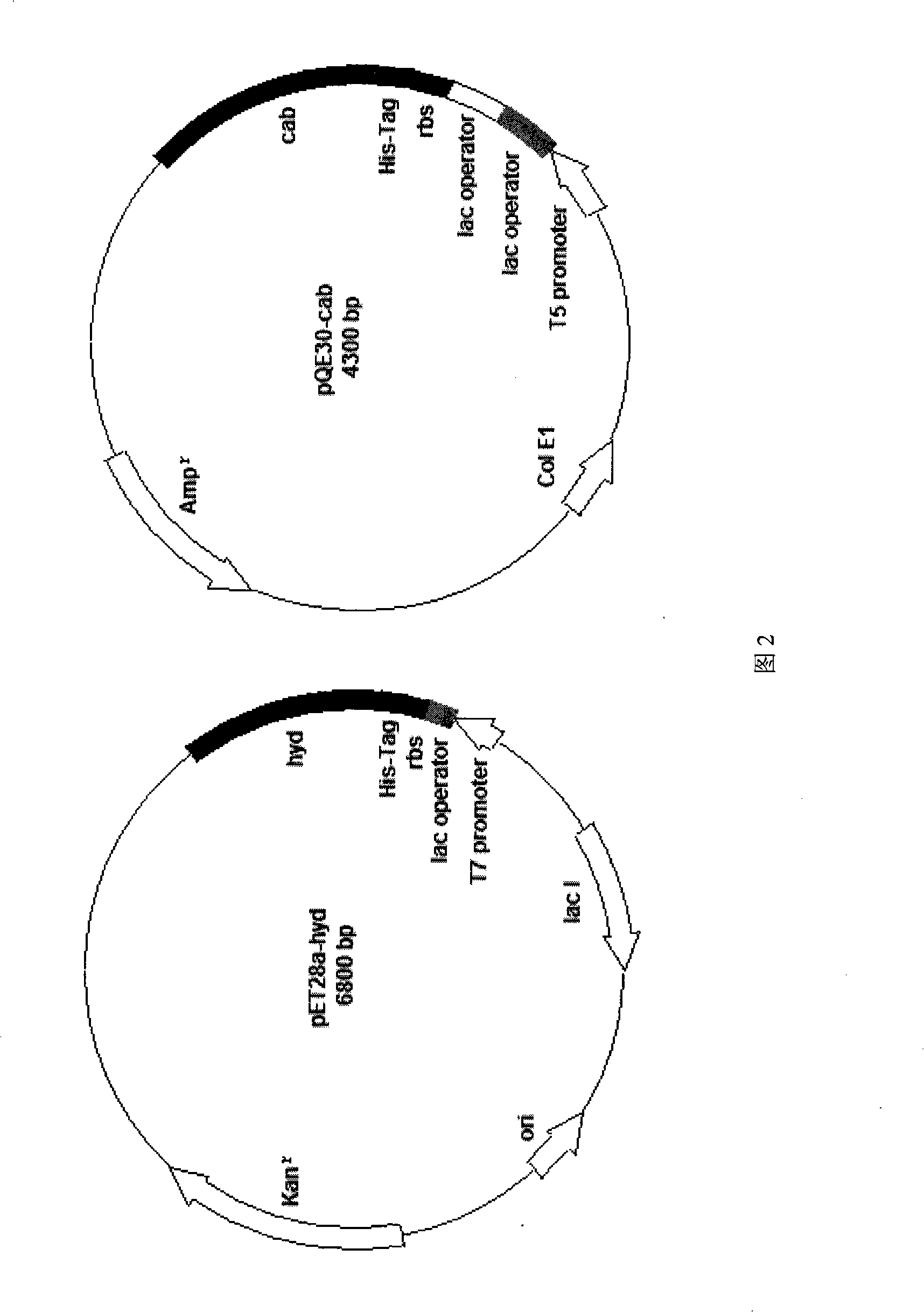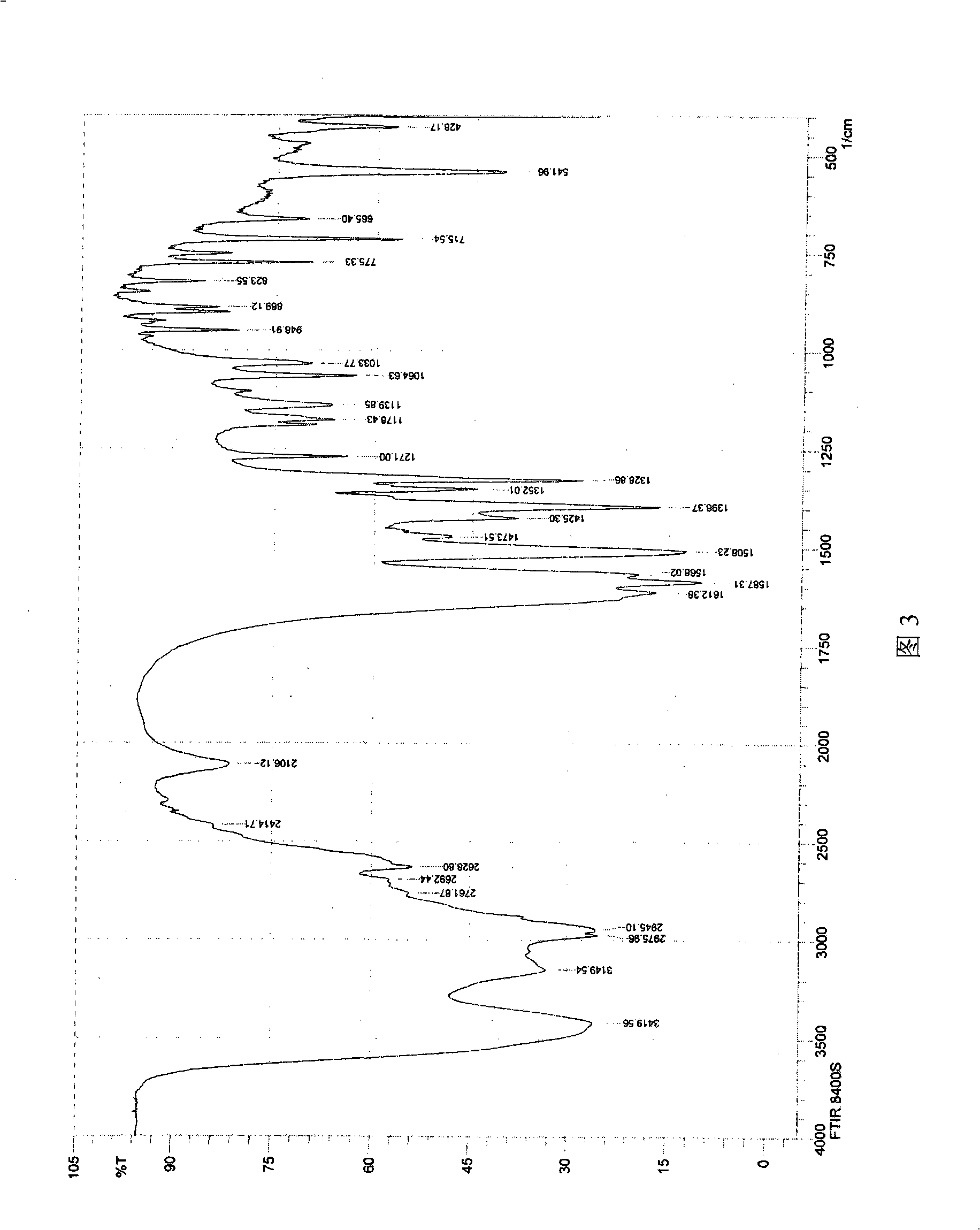Engineering bacterium, construction thereof and method for preparing D-valine by using the same
A construction method and technology for engineering bacteria, applied in the field of protein engineering, can solve the problems of production scale limitation, easy to be contaminated by bacteriophage, etc., and achieve the effects of low production cost, avoiding oxidation, and improving transformation efficiency.
- Summary
- Abstract
- Description
- Claims
- Application Information
AI Technical Summary
Problems solved by technology
Method used
Image
Examples
Embodiment 1
[0021] Example 1: Construction of recombinant plasmids and engineered bacteria
[0022] Using the genomic DNA of the strain Pseudomonas putia YZ26 preserved in our laboratory as a template, the primers 5'-CCCGAA TTC CAT ATG TCC CTG TTG ATC CGT-3' and 5'-CCC GGA TCC TCA GCG CTG AACTGG-3' were used to carry out PCR amplification. The PCR product was recovered by 1% agarose gel electrophoresis, digested with Nde I / BamH I, and then connected to the similarly digested vector pET-28a to obtain a recombinant plasmid pET28a-hyd (Figure 2), which was transformed into E. coli DH5α competent cells, single colony PCR screening positive recombinants, Nde I / BamH I double digestion to identify the size of the insert, and finally confirmed by DNA sequence analysis.
[0023] In order to preserve the genome DNA template of Sinorhizobium sp.SS-ori in our laboratory, primers 5'-GGGGA TCC ATG ACA CGT CAG AAG ATA C-3' and 5'-GGG AAG CTT TCA GAA TTC CGC GATCA-3 'Proceed to PCR amplification. The ...
Embodiment 2
[0025] Example 2: Activity detection of engineering bacteria
[0026] According to the catalytic reactivity of the enzyme and the structural properties of the product D-amino acid, OD can be determined by color using the ninhydrin method 570nm The light absorption values were used to calculate the amount of product formed and the enzymatic activity. It can also be directly measured by HPLC method.
[0027] 1. Ninhydrin chromogenic method
[0028] After centrifuging 200 μL of bacterial liquid, discard the supernatant, wash the obtained bacterial cells once with 100 mmol / L PBS (pH 8.0), and resuspend the bacterial cells with 1 mL of 25 mmol / L isopropyl hydantoin dissolved in the same buffer. Suspend with 100 mmol / L PBS, shake at 37 °C for 1 h, centrifuge at 13000 r / min for 10 min, take 400 μL of the reaction solution and add an equal volume of 2 mol / L NaAc buffer (pH 5.5), incubate at 60 °C for 5 min, and then add 400 μL ninhydrin (58mg reduced ninhydrin, 58mg hydrated ninh...
Embodiment 3
[0036] Example 3: Using engineering bacteria E.coli BL21 (DE3) / (pET28a-hyd, pQE30-cab) to transform 5'-isopropyl hydantoin to produce D-valine
[0037] According to Example 1, a single colony was picked from the plate and inoculated in 5 mL LB (containing 50 μg / mL Amp and 40 μg / mL Kan) liquid medium at 37° C. for 10-12 h. The pre-cultured bacteria were transferred to fresh 1L LB liquid culture solution containing antibiotics Amp (50 μg / mL) and Kan (40 μg / mL) at 2% inoculum, and shaken at 37°C until the bacterial concentration reached OD. 600nm When ≈ 1.2, IPTG was added to the final concentration of 0.2 mmol / L, cultured at 20°C for 10-12 h, and the cells were collected by centrifugation.
[0038] Prepare 400mL 50mmol / L 5'-isopropyl hydantoin solution with deionized water, adjust the pH to 9.0 with saturated NaOH, add the collected thalline and put it into a triangular flask, and replace the oxygen in the triangular flask with nitrogen. After sealing, the reaction was shaken a...
PUM
| Property | Measurement | Unit |
|---|---|---|
| Melting point | aaaaa | aaaaa |
Abstract
Description
Claims
Application Information
 Login to View More
Login to View More - R&D Engineer
- R&D Manager
- IP Professional
- Industry Leading Data Capabilities
- Powerful AI technology
- Patent DNA Extraction
Browse by: Latest US Patents, China's latest patents, Technical Efficacy Thesaurus, Application Domain, Technology Topic, Popular Technical Reports.
© 2024 PatSnap. All rights reserved.Legal|Privacy policy|Modern Slavery Act Transparency Statement|Sitemap|About US| Contact US: help@patsnap.com










